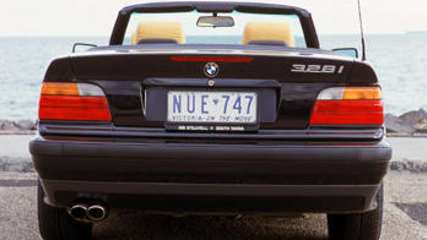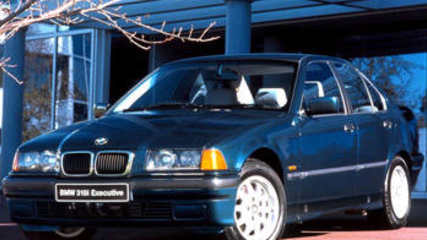BMW 3 Series 2013 review
By Paul Gover · 31 Jul 2013
Doctor Frankenstein could not have done a better job on the new BMW 3 Series Gran Turismo. The family hatch with the 3 Series tag is more like a 5 Series in the body, more like a 7 Series in the cabin, and has - just quietly - more than a touch of Saab 9000 in the tail.It's also got frameless doors like a Subaru Impreza, a giant hatchback tail similar to a Ford Mondeo, and a pop-up rear spoiler that reminds me of a Porsche Cayman.And the styling? Well, even the Carsguide fans of the car admit it has a pregnant paunch, while others suggest it just looks butt ugly. If this sounds a bit confused or confusing, or a bit mix-and-match, it's not. It's monstrously good for anyone with a young family who craves the boot space of a wagon, the flexibility of a hatch, and the driving enjoyment of a 3 Series.I think the GT is an even better drive than a regular 3 Series and it's a car I would recommend to friends. It's definitely a leap forward from BMW's first GT, the over-hyped and under-done 5 Series model. As many as 500 Australian families are expected to choose a 3 GT for their next car, or around 10 per cent of total 3 Series deliveries.And it could easily mean the end of the Touring wagon down under. “We've had a bigger reaction to this car than we expected. It's got more interest than anything else recently,” says Tom Noble, head of marketing at BMW Australia. “It's one of those cars that people go, 'What's this then?' It's already working better for us than the 5 Series GT.”VALUEWould you pay more than $9000 over a 3 Series sedan to get a GT? That's what BMW is asking, even though it says the compensation comes with more equipment and a car that is majorly bigger than a four-door Three. The starting price for a 320i GT is $69,599, against $58,600 for a 320i four-door, rising to $71,800 for the 320d and $76,500 for the 328i Gran Turismo.The package includes an eight-speed automatic gearbox, a full suite of safety equipment, leather in the cabin, great aircon and a big infotainment display, as well as the electric assists you expect in a prestige car. As usual now at BMW, the specification choices are Modern, Luxury and Sport, but you can also spend big on things like M equipment and customised cabin pieces.“There is more specification in the car than the standard 3 Series sedan, and you've got more functionality and more space. And there is more metal in the car,” says Noble. “I think there is good value in it, because I don't think you get that combination in anything else. To put all those bits and pieces together, to get it to work, that's where the value is. I don't know if anyone else could build a car like that and get it to drive the way it does”.TECHNOLOGYThe Gran Turismo is predictably BMW in the raft of electronics inside the cabin and under the body, but the real technology is in building the body. The car is so different from a regular Three that it comes down the 5 Series assembly line in Germany, where they apply finishing touches that include a back end with everything from 520 to 1600 litres of storage, a big storage bin under the boot floor, an electric tailgate, rear-view camera and more.I'm not convinced by the 'active' rear spoiler, which only rises from the tail at 110km/h and can hardly make much difference at legal Australian speeds. The GT still comes with runflat tyres that have been despised by the Carsguide crew, although these latest Continentals are easily the best I've tried - even on 19-inch alloys. All three models come with stop-start.DESIGNThe GT wears a 3 Series badge but it shares very few panels with the sedan. In fact, it could be just the boot, as even the front guards pick up an extractor vent to cut drag, and the roof, frameless doors, and everything in the tail is new. The proportions of the car are somewhat, well, stretched. And not always in a good way, despite the curvy coupe-style roofline. There is a lot of bulk around the tail, although it's needed to package a car that is a full 200 millimetres longer than the 3 Series sedan and also 81 millimetres taller. The best thing is the 110mm stretch to the wheelbase that means rear legroom to trump a 7 Series and a more compliant feel to the ride.Inside, the rear seats are set slightly higher in the latest 'theatre' style for a better view, and they obviously split and fold - 40:20:40 in this case - to maximise the choices for carrying, as well as offering a slight recline.SAFETYWe have no reason to question the competence of a car that's almost an automatic 5-star NCAP car. There are six airbags, ESP and ABS, an active crash-preparation system, dynamic braking lights that vary their intensity in a panic stop and automatic wipers.DRIVINGThe early mail on the Gran Turismo is not promising, based on the bloated back end and driving responses that are more leisurely than we expect from a 3 Series. Then again, the latest Three is being smashed in showrooms and was easily trumped by the Benz C-Class in our last prestige comparison.So it's time for a fresh look and some family time, which quickly highlights the advantages of the GT. The boot really is huge, there is great space for a four-year-old in the back seat, and the car is comfy and quiet.On some nasty, bumpy roads in northern NSW - not recommended in the BMW drive route - the GT is surprisingly compliant and enjoyable. I'm spoiled a little by starting in the 328i, which makes 180 kiloWatts of turbo power with 350 Newton metres of torque from its force-fed four, but time in the 320i with 'only' 135/270 shows the same pattern.It's not a car to hustle or fuss, but the extra length between the wheels makes it more stable and the suspension settings are firm but not too sporty. It's also nicely quiet, although there is more tyre thrum in the 320, and well equipped with a punchy sound system. But I'm disappointed not to find a digital speedo readout and - horror of horrors - there is no wiper on the giant rear window, which means zero visibility until you're moving fast enough for airflow to clean the glass. After time with the 5 Series GT, which is a car I'm happy to forget, the new 3 is a pleasant surprise and definitely suitable for nuclear family work. The boot is a treat, there is lots of flexibility in the cabin and storage, and I'd take it every time ahead of the Touring wagon.It's nothing like an M3, but sales of SUVs prove there are lots of people who put families ahead of fun. And the GT is definitely better than an SUV to drive, with a boot that even beats an X3 or any of BMW's rivals. I had come to the 3 Series GT expecting to be disappointed, but find myself surprisingly happy with the car. It could have been created by Frankenstein, but it's not a monster.VERDICTThe best of both worlds, once you look beyond the bloated body.BMW 3 Series GTPrice: from $69,500Warranty: 3 years/unlimited kmResale: New modelService interval: determined by onboard computerSafety: 6 airbags, ABS, ESP etcCrash rating: 5 stars (estimate)Engines: 2-litre petrol turbo, 135kW/270Nm; 2-litre turbodiesel, 135kW/380Nm; 2-litre turbo petrol, 180kW/350Nm.Transmission: 8-speed auto, RWDThirst: 4.9-6.5L/100km, 129-151g/km CO2Dimensions: 4.82m (L), 1.82m (W), 1.50m (H)Weight: from 1560kgSpare: none
.jpg)














